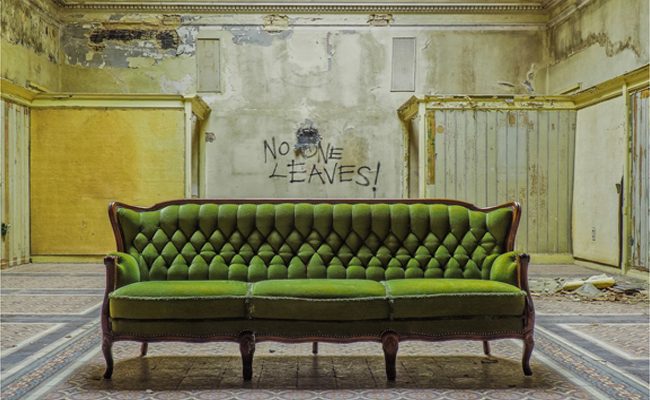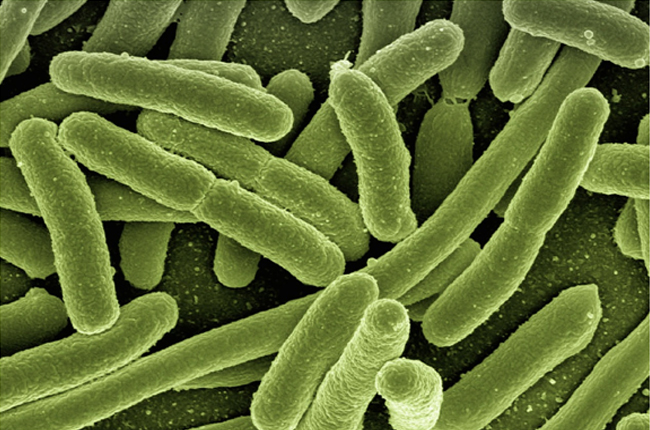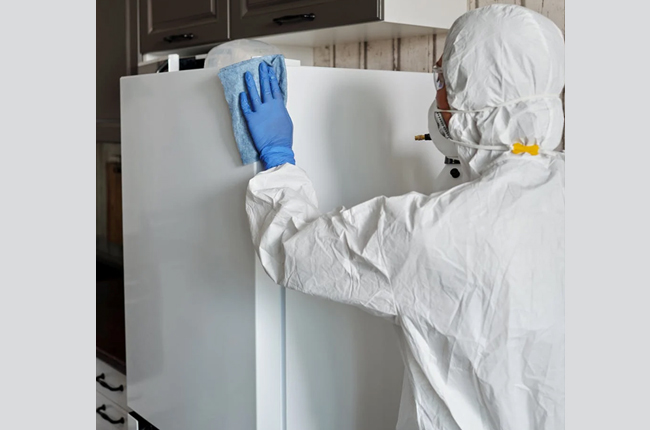
The Little Guys
Microorganisms are a natural part of every ecosystem and are essential for breaking down organic material into its basic components. Wherever there is moisture and anything organic and sometimes even inorganic these little guys will make themselves at home and begin digesting it. There are plenty of species of bacteria that will occupy the average home, as well as many types of molds as well. And don’t forget, every time you open a door or a window to let in the fresh outside air, you are opening up a passageway for these microorganisms to ender your house.
Mostly Harmless

Now, it is said that most species of bacteria found in a home are harmless and even necessary, but on some occasions that bacteria can turn out to be the harmful kind. Click here for an explanation of why some bacteria can actually be helpful. The same goes for mold- there are variations that are harmless or fungi that conceal themselves within wood and grow unnoticed whenever there is enough moisture- and there are also molds that are common to see in a home, like bread-mold, but they are also easy to get rid of. But there is also black-mold, (l. Stachybotrys Chartarum) which creates harmful mycotoxins, and other such kinds of fungus that are harmful and cause allergies.
How Bad is Bad Mold?
The symptoms of exposure to mold vary from individual according to their sensitivity to airborne particles or depending on if they already have allergies. But these include headaches, inflammation, fevers, shortness of breath, and even muscle pain and/or attention problems. Luckily, having black mold in your basement won’t kill you if you were to go down there and breathe the air, contrary to a lot of superstition. Although it is true that breathing enough of anything in the air that is not oxygen definitely will, you can be guaranteed that the worst of your mold problems will never be that bad. And it gets better from here, too.
Be Sure To Have Your Home Tested
There are services out there that provide air quality testing for people’s homes. The idea is to diagnose the atmosphere, rating it in terms of overall quality while checking for mold spores or other signs of toxic microorganisms. The latter is done through bio aerosol testing and surface testing to determine the genera and species of the mold(s) or bacteria. Check out AirCareOnline.com to see what the next steps are in diagnosing and treating any major indoor mold problem. Every infestation of mold is unique, and therefore it takes a thoughtful, evidence-based approach to understand each case and develop the necessary protocol to contain and remove the fungus.

What Can Homeowners Do Themselves?
At this point if you think you might have a mold problem, you know by now that you aren’t alone and you can easily call and hire professionals to come assess your situation. However, there are some things you can and should so if you are worried about mold ruining your home. First, check for leaks in the roof or leaky pipes anywhere within the internal structure of the house, as they can introduce moisture and create a problem underneath your feet even if you can’t see it. I know from personal experience what can happen if this goes unchecked. Late in 2021 my significant other and I purchased a home built in the 90s, and little did we know that the previous owners did almost nothing to maintain it.
How I Dealt With A Mold Problem
As it turned out, the toilet in the hallway bathroom had been leaking for who knows how long. So I took off the top layer of vinyl flooring to reveal two layers of wooden sub flooring, and sure enough, the particleboard had been soaked through over time and was now coated with a thick velvety layer of black mold. The effected area ended up being roughly a three-foot radius around the toilet where the wood had rotted completely through. Naturally, I cut out the rotten, velvety wood and to work replacing the sub flooring around the toilet. Before I got to work, though, I had to spray down the visible surfaces containing the black fungus with a 1 to 5 bleach-to-water solution in order to kill it off and wet it down from releasing any more spores in to the air.
What to Check For
When performing tasks like these, it is also helpful to wear a N-95 mask to ensure that no spores enter your lungs. While this time I had to cut into the floor to get the full scope of the issue, it is also possible to check for black mold in the structure of the house by going into the basement or crawlspace below the house and looking up to the ceiling between the joists/support beams for affected areas. Another kind of mold that grows inside wet drywall is called Chaetomium, and it tends to give off a damp ‘old’ smell.
But be warned that in the end calling for a professional is often necessary, because of molds like these: Serpula Lacrymans is a yellowish fungus responsible for dry rot and is dangerous because it is hard to trace- it gives off no smell, and can affect vast areas before being detected.
This Illusive Pest Needs Professional Detection
There are also molds that do not affect just one obvious area. Aspergillus is a strain of fungi that is largely airborne. In fact, most people breathe in millions of spores every day. But they are unlikely to cause any sort of reaction unless a person has a weakened immune system or is sensitive or allergic to mold. There are many other types of fungi that reside in people’s homes, and it should be clear by now that it is difficult to deal with such a prevalent and immediate threat without calling in a professional. Otherwise, the full extent of the damage to the house can never fully be assessed, and neither can the health risks associated with very specific strains.
Leave a Reply